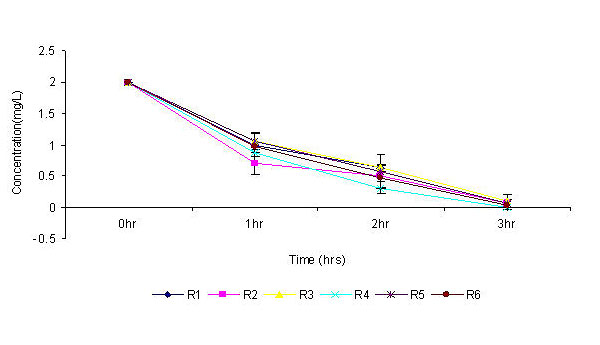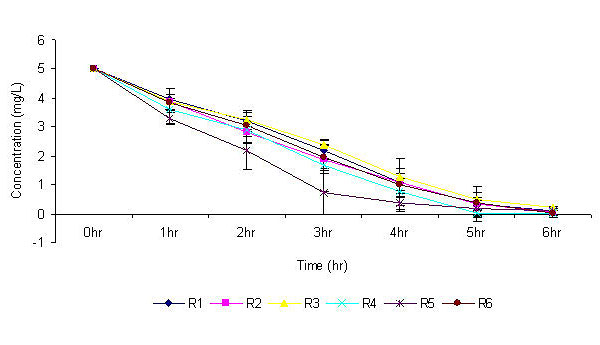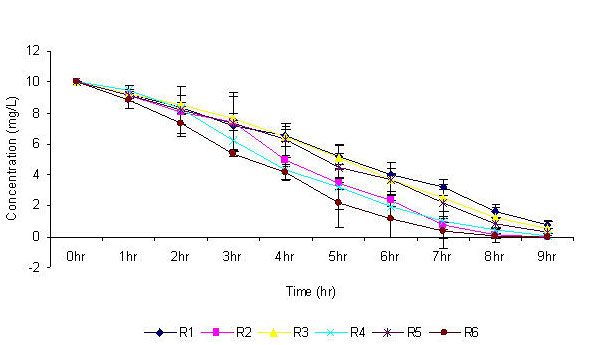Nitrification Principle / Field Trials of Nitrification Efficiency
Nitrification in a broodstock maintenance system connected to Packed Bed Bioreactor
- System is operated without water exchange
- Ammonia-nitrogen and nitrite-nitrogen concentrations consistently remain at an average level of 0.3ppm and does not exceed 0.6ppm
- Nitrate concentration does not increase beyond 7ppm due to denitrification, which has been experimentally established as one of the characteristics of the consortia.
- Consequently the technology eliminates the requirement of introducing a distinct denitrifying system to facilitate nitrate removal.
- Precisely there is total removal of nitrogen from the Recirculating Aquaculture System.
Activation of PBBR integrated to Penaeus monodon maturation system – Duration required for activation
Within seven days the reactor could be made fully functional.
TAN, NO 2 -N and NO3-N in an experimental Penaeus monodon brood stock maintenance system during quarantine integrated with SBSBR
Figure showing the utility of the SBSBR in Brood Stock quarantine system.
All the 6 reactors that constitute the PBBR exhibited ammonia consumption of ˜ 1ppm/hr (Fig 1 (a), (b) & (c)), and the rate of consumption increased with the strength of the substrate.
All the 6 reactors that constitute the PBBR exhibited Nitrite consumption of ˜ 2ppm/hr (Fig 2 (a), (b) & (c)), and the rate of consumption increased with the strength of the substrate .
The increase in the substrate concentration resulted in the increased substrate consumption.

Fig 1(a)

Fig 1(b)

Fig 1(c)
Fig. 1(a), Fig 1(b), and Fig 1(c) : Ammonia removal by the reactors under varying substrate concentrations (a = 2 ppm, b = 5 ppm, c = 10 ppm). R1 to R6 refer to the six reactors that constitute the PBBR.

